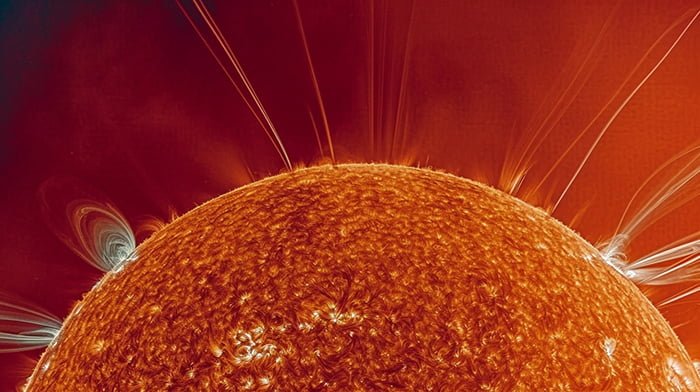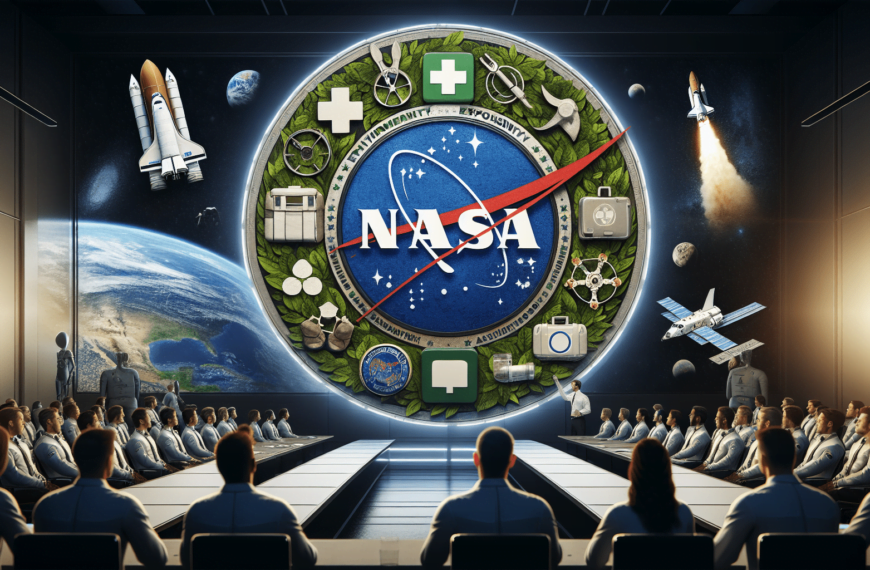Discover why sending garbage into space is impractical due to costs and environmental impacts. Explore sustainable waste management solutions today!
Key Takeaways
- Sending garbage into space is economically unfeasible due to high launch costs.
- Environmental impacts of rocket launches are significant and detrimental.
- Space debris poses a critical threat to future space missions.
- Current payload capacities are insufficient for large-scale waste disposal.
- International regulations do not support space-based waste management.
The idea of sending garbage into space might seem like a futuristic solution to Earth’s waste management problems. However, this concept is fraught with challenges that make it impractical. From prohibitive costs to environmental concerns, the logistics of launching waste into space are complex and unsustainable. This blog post explores why sending garbage into space is not feasible and examines more practical alternatives for waste management.
Prohibitive Costs
The cost of launching payloads into space is a major barrier to using space as a garbage dump. Even with advancements in technology, the expenses remain high:
- SpaceX’s Falcon 9: This rocket, known for its cost-effectiveness, charges about $1,200 per pound of payload to low-Earth orbit (LEO).
- NASA’s Space Launch System (SLS): More powerful rockets like the SLS cost over $2 billion per launch.
Given the vast amount of waste produced globally, the financial burden of launching even a small portion into space would be astronomical and economically unsustainable.
Environmental Impact of Launches
Rocket launches have significant environmental consequences that cannot be overlooked:
- Atmospheric Pollution: Rocket combustion releases pollutants such as black carbon (soot) and aluminum oxide. Black carbon is particularly concerning as it is nearly 500 times more effective at warming the atmosphere than other particles.
- Ozone Layer Depletion: Increased spaceflight activity could damage the ozone layer. Rocket emissions release nitrogen oxides and other chemicals that catalyze ozone depletion.
- Health Risks: The potential depletion of the ozone layer due to increased rocket activity could elevate the risk of skin cancer, cataracts, and immune disorders.
Launching waste into space would require a massive increase in rocket launches, exacerbating these environmental issues.

Space Debris Concerns
Sending garbage into space would significantly contribute to the already critical problem of space debris:
- Threat to Space Missions: Space debris poses a significant threat to both space missions and the Earth’s environment.
- Kessler Syndrome: The accumulation of debris in Earth’s orbit increases the risk of collisions, potentially creating more debris in a cascading effect known as the Kessler Syndrome.
- Sustainability Issues: This not only endangers future space missions but also contributes to long-term sustainability issues of space activities.
Limited Payload Capacity
Current space launch technology has limitations in terms of payload capacity:
- Payload Limits: Even the most powerful rockets can only carry a limited amount of payload into space.
- SLS Limitations: The Space Launch System (SLS), one of the most capable heavy-lift launch vehicles, is designed for missions beyond LEO rather than waste disposal.
Given the vast amount of waste generated on Earth, the payload capacity of current rockets is insufficient to make a meaningful impact on waste management.
Regulatory Challenges
International space laws and regulations are not designed to accommodate large-scale waste disposal in space:
- Outer Space Treaty (1967): This treaty requires states to avoid harmful contamination of space and adverse changes to the Earth’s environment.
- Lack of Specific Regulations: There are no specific, binding regulations directly addressing space debris, let alone the intentional placement of waste in space.
- Potential Violations: Sending waste into space could potentially violate existing international agreements and create new legal challenges.
Practical Alternatives for Waste Management
Instead of the impractical and harmful idea of sending waste into space, there are several more effective and environmentally friendly alternatives:
1. Waste Prevention and Minimization
The most effective approach to waste management is preventing its generation in the first place:
- Environmentally Conscious Manufacturing: Implement methods that reduce waste production.
- Hazardous Material Reduction: Decrease the use of hazardous materials in production.
- Product Design: Design products for longer life and easier recycling.
2. Recycling and Reuse
Recycling and reuse are crucial strategies for managing waste:
- Material Recovery: Recover materials like glass, paper, plastics, and metals from the waste stream.
- Product Reuse: Extend the life of products and materials, delaying their entry into the waste stream.
- Resource Conservation: These practices reduce the need for raw materials, conserve natural resources, and decrease energy consumption and greenhouse gas emissions.
3. Biological Treatment
For organic waste, biological treatment methods are highly effective:
- Composting: Converts organic waste into valuable soil amendments.
- Anaerobic Digestion: Produces biogas for energy and biosolids for fertilizers.
4. Waste-to-Energy (WTE) Technologies
WTE processes can convert non-recyclable waste into usable forms of energy:
- Energy Recovery: Incineration with energy recovery, gasification, and pyrolysis can reduce waste volume while generating energy.
- Emission Management: These methods must be carefully managed to minimize emissions.
5. Mechanical Biological Treatment (MBT)
MBT combines mechanical sorting and biological treatment:
- European Adoption: Widely used in Europe, it can effectively reduce landfill use and recover resources.
6. Innovative Technologies
Emerging technologies are improving waste management efficiency:
- Smart Waste Management: Systems and robotic sorting can increase the accuracy of waste processing and recycling.
- Resource Recovery: These technologies can reduce the need for manual labor and improve resource recovery.
7. Policy and Regulation
Effective waste management relies on strong policies and regulations:
- Extended Producer Responsibility (EPR): Implement frameworks to incentivize companies to design products with end-of-life management in mind.
- Regulatory Development: Develop and enforce regulations that encourage waste reduction, recycling, and the use of alternative technologies.
Wrap-up
Sending garbage into space is not a feasible solution due to prohibitive costs, severe environmental impacts, space debris concerns, limited payload capacity, and regulatory challenges. Instead, a combination of waste prevention, recycling, biological treatment, waste-to-energy technologies, and innovative solutions, supported by strong policies and regulations, offers a more practical and sustainable approach to waste management. These earth-based solutions are not only more cost-effective but also environmentally responsible and aligned with current technological capabilities and legal frameworks.By focusing on these alternatives, we can address the global waste problem more effectively and sustainably, ensuring a cleaner and healthier planet for future generations.





























